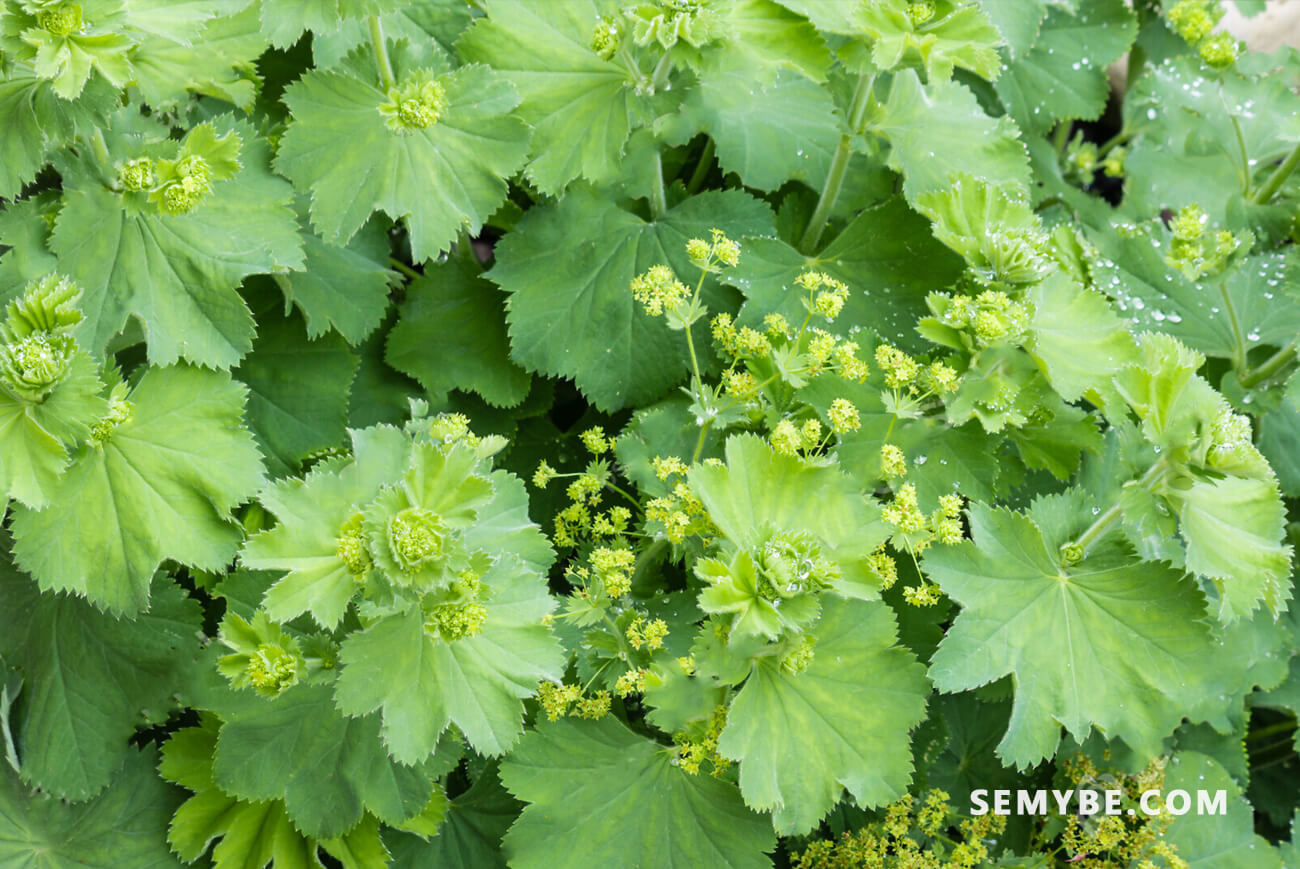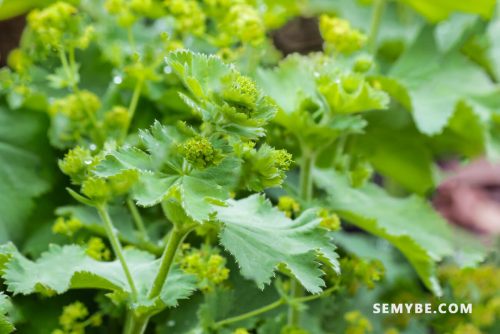
Alchemilla Vulgaris
History And Use
The lady’s mantle owes its name to the alchemists who considered the dew of its leaves as heavenly water indispensable for the preparation of the philosopher’s stone. In the Middle Ages, this plant was already used in herbal medicine, but it was supposed to giving back their virginity to women and shine to withered breasts. This is where its name comes from “lady’s mantle”, since the plant was known to firm the tissues of the device female genital by wrapping it like a coat.
The lady’s mantle appears in 1570 in a treatise by Andrés Laguna de Segovia, a Spanish doctor, pharmacologist and botanist who recommends it as an infusion to cure cracks and fractures in babies and young children, but also powdered with red wine to treat all kinds of wounds. This was actually in the early twentieth century that the Swiss priest and herbalist Johann Künzle demonstrated it is useful in the relief of premenstrual pains, but also in the preparation of childbirth.
Description Of The Plant
Perennial plant native to Europe and North America, the lady’s mantle grows in many environments, from woods to wet pastures, from meadows to mountains, of course by the massifs of our gardens. More than 50 species of lady’s mantle, which is commonly used in herbal medicine, is the Common Alchemilla, otherwise known as the Alchemilla vulgaris (Alchemilla vulgaris), with its light green stem with reddish tints measuring 10 to 30 centimeters.
Circular shape and consist of seven to eleven lobes The flowering of the lady’s mantle takes place between May and October, during which time the plant produces small flowers of a yellow color turning towards green. In herbal medicine, we use the leaves of the lady’s mantle, but without their petioles. The lady’s mantle contains gallic tannins, which help stop the bleeding, but also flavonoids, with antioxidant and anti-inflammatory properties, salicylic acid, phytosterols, saponins as well as palmitic and stearic acids.

Curative Action
Internal Use
Antidiarrheal: lady’s mantle is indicated for mild diarrhea, especially in pregnant women.
Astringent and calming: it helps to alleviate the pain of menstruation as well as gastrointestinal disorders, it’s also useful for dealing with PMS and helping to regulate menstrual periods.
Antioxidant: the flavonoids present in the lady’s mantle help maintain good blood circulation (thus fighting against heavy legs).
Healing: the lady’s mantle stops the haemorrhages, especially those due to too abundant rules, at the time of the premenopause for example.
External Use
In external use, because of its decongestant properties, the lady’s mantle is recommended to relieve people with heavy legs, but also to treat vaginal conditions such as white discharge mouth, it also helps maintain good oral hygiene.
Usual Therapeutic Indications
The lady’s mantle can be used in cases of mild diarrhea, gastrointestinal disorders and most importantly, gynecological disorders, whether it be menstrual pain, premenstrual syndrome vaginal conditions such as white discharge, it also helps to relieve people with heavy legs and swollen ankles, as well as to maintain oral hygiene and treat mouth ulcers.
Uses
In internal use, the lady’s mantle is mainly consumed as an infusion from: 2 to 4.5 grams of dried leaves infused in 200 ml of water will make it possible to make an herbal tea from which one can drink two to three cups a day to stop a mild diarrhea or to relieve painful menstrual periods. A decoction of two to four cups per day of 7 g of leaves dried in 200 ml of water, the lady’s mantle avoids gynecological disorders.
In external use, the lady’s mantle can be used in sitz bath, gargle or simply be mixed with the bath water (in case of heaviness in the legs for example). In this case, the dosage is 50 g. of dried aerial parts infused in a liter of water.
Because of its action close to progesterone, the lady’s mantle must be used with great care by all those taking an oral contraceptive. The family tree suffering from gastritis or peptic ulcer is contraindicated for people suffering from gastritis or people ulcer.




